Contents
It is necessary to fertilize the hydrangea in the spring, first of all, so that the plant recovers after the winter. In addition, during this period, the shrub spends a lot of vitality on the formation of green mass and the creation of buds, so for lush flowering it is better to make at least one top dressing.
If even after a couple of spring dressings the hydrangea looks oppressed, additional fertilizers are added to the soil in summer and autumn. If you initially plant this crop in soil with a high level of acidity, the need for top dressing is minimized.
Do I need to feed the hydrangea in the spring
Despite the fact that this is a fairly unpretentious and hardy culture, at the beginning of the growing season, the shrub is in dire need of recharge. Timely feeding with organic and mineral mixtures restores its strength after a slight freezing and stimulates a rapid set of green mass. Ultimately, the hydrangea not only blooms profusely, but also forms a lush spectacular crown.
Micronutrient deficiency inhibits bush growth. Their shoots become thinner, the foliage is extremely scarce, and there are almost no flowers on the branches. A serious lack of nutrition is indicated by the yellowing of the leaves and their subsequent fall.
For this reason, in spring, hydrangeas are fed with large doses of nitrogen, it is he who is responsible for the foliage of plants. It is followed by potash fertilizers and phosphate compounds.
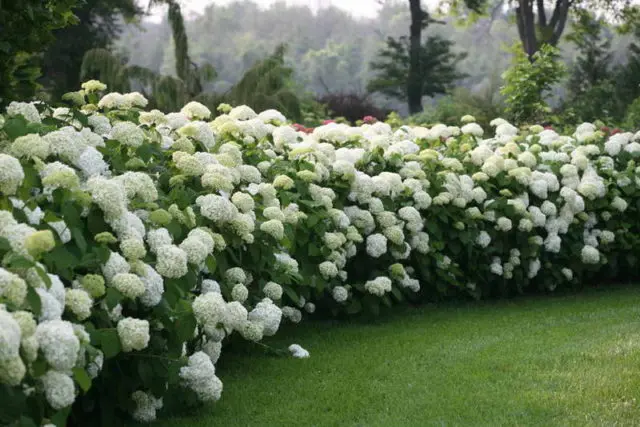
Hydrangea responds well to spring feeding and, with proper care, forms a large number of inflorescences.
When to Fertilize Hydrangeas in Spring
In the spring, at least 2 top dressings of hydrangea bushes are carried out. For the first time, plantings are fertilized after the snow has melted and the soil has thawed. In the conditions of the middle lane, this falls on the beginning-mid-April. During this period, emphasis is placed on nitrogen-containing fertilizers.
The second top dressing falls on the stage of bud formation. At this time, the hydrangea is fed with potash and phosphorus compounds. Complex fertilizers have proven themselves well.
Additionally, you can feed the hydrangea 2-3 times with a solution of manganese in the spring. This substance will help strengthen the wood tissue.
Fertilizing hydrangeas in the spring with folk remedies
Folk remedies allow you to fertilize hydrangea bushes quickly and cheaply. They are quite effective, but you should not rely entirely on them. All of these methods should be used only in combination with industrial formulations, alternating between these two types of fertilizers.
Dairy products
A fairly simple and cheap way to feed hydrangeas in the spring is to use leftover fermented milk products. This includes kefir of any fat content, yogurt, a variety of whey, fermented baked milk, etc. All these products effectively acidify the soil, which has a beneficial effect on the color of the buds.
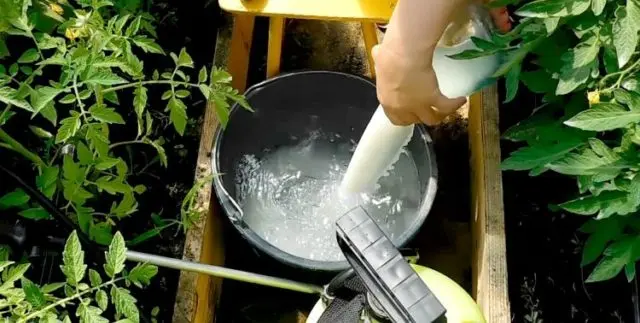
Fermented milk products allow you to change the pink color of hydrangea to blue
Bread infusions
A good top dressing for the lush flowering of hydrangeas is watering the plants with bread infusion in the spring. It can be made by soaking bread crusts, after which the resulting composition is diluted in a ratio of 1: 1. The liquids are allowed to brew a little more, decanted and poured under the hydrangea bushes in the spring.
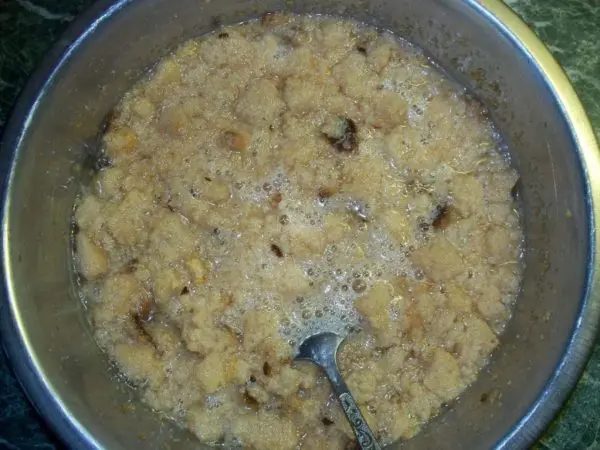
If you feed the plantings with a solution of sour bread, you can significantly increase the content of beneficial soil bacteria.
Yeast
Another common way to feed garden hydrangea is to add ordinary baker’s yeast to the soil. There are different fertilizer formulations based on this product, but one of the most popular is the following: a bag of the substance is mixed with 2-3 tbsp. l. sugar and pour it all into 1 liter of water at room temperature. When the yeast foams, the solution is poured into a 10-liter bucket and more water is added to it so that the container is filled to the top.
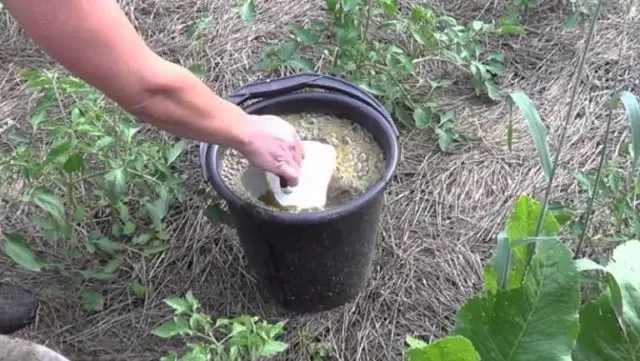
The resulting solution is used for watering hydrangeas in the region of the near-stem circle.
Banana peel
Banana peels are one of the most affordable ways to feed hydrangeas in the spring without any major expense. Bananas contain a large amount of potassium, magnesium, nitrogen and phosphorus, and in fact these elements are vital for garden plants to bloom fully.
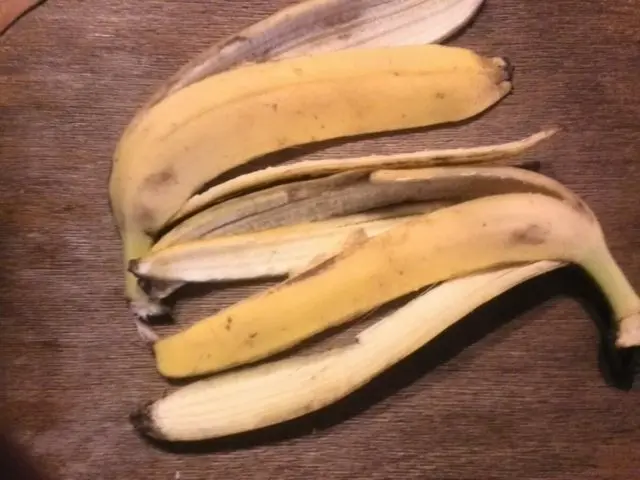
Plantings are fertilized with an infusion in which a banana peel is kept
Маргацовка
Very often, hydrangea is fertilized with potassium permanganate, but here it is important not to exceed the permissible norms. The solution should not be concentrated – a few crystals of potassium permanganate per bucket of water are enough. If you stir it, it should become slightly pink.
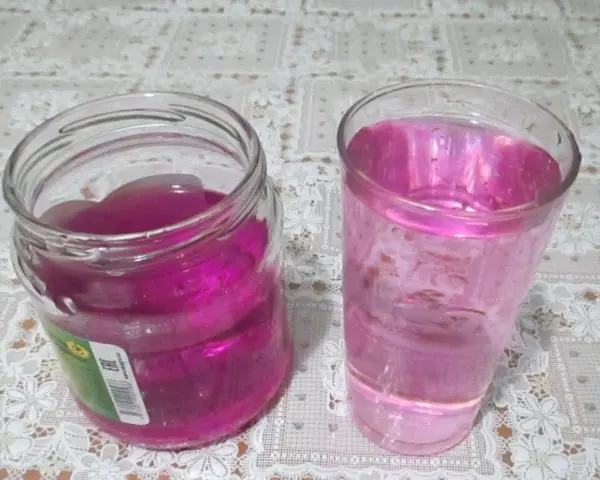
Saturated color indicates that the content of potassium permanganate is too high
Feeding hydrangeas in spring with mineral fertilizers
The simplest mineral fertilizers for hydrangeas in the spring are superphosphate, potassium sulfate and ammonium sulfate. Before use, these substances are dissolved in settled water and introduced into the soil according to the instructions, watering the plantings from April-May to July.
Urea solution has also proven itself as a fertilizer. It is bred in a proportion of 1 tbsp. l. substances on a bucket of water. In spring, the consumption of such a solution is 5-8 liters for each plant.
“Agricola” for indoor and garden hydrangeas
Agricola is very popular, which can be used to feed both garden and indoor hydrangeas. The basis of the complex is nitrogen, phosphorus and potassium.
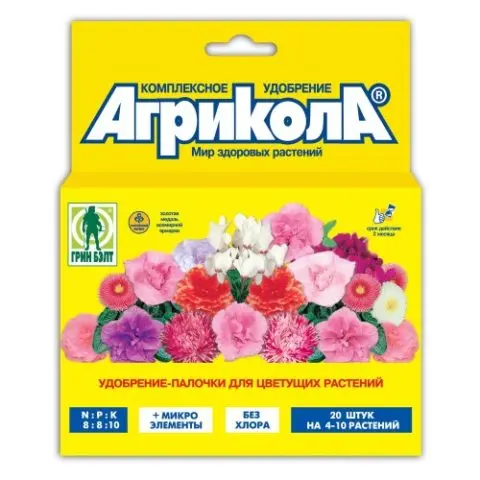
Release the drug in the form of special sticks for plants
“Pocon”
Top dressing “Pokon” is produced in the form of granules. They are scattered in the area of uXNUMXbuXNUMXbthe near-stem circle, lightly sprinkled with soil. After incorporating the nutrient composition, the bushes are watered abundantly so that the active components contained in it penetrate into the ground.
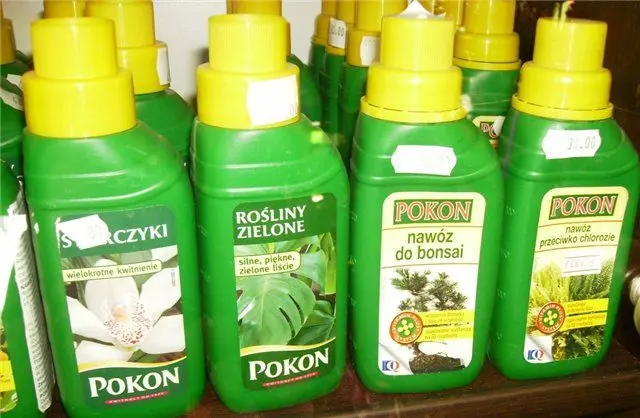
This is a long-acting drug that is used only once per season.
“Ferrovit”
Ferrovit is sprayed with plantings if the plant is iron deficient. This is evidenced by the weakening of the immune system – the bushes begin to hurt and look oppressed. The recommended dosage of the solution for this horticultural crop is 1 g of the substance per 1 liter of water.
“Ferrovit” is used for preventive dressing of panicled hydrangeas in the spring.

The use of the drug reduces the risk of chlorosis in hydrangea bushes
«Green World»
“Green World” fertilize the flower bed in spring and summer according to the instructions to increase the splendor of flowering. The effect of the drug lasts an average of 2-3 months.
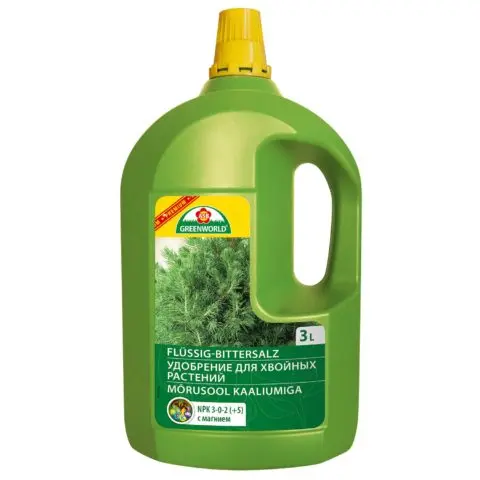
The tool is especially effective in the summer.
“Fertika”
“Fertika” is a specialized nutrient composition for garden hydrangeas. This drug is recommended to feed the bushes 1-2 times a month according to the instructions, from spring to the end of summer.
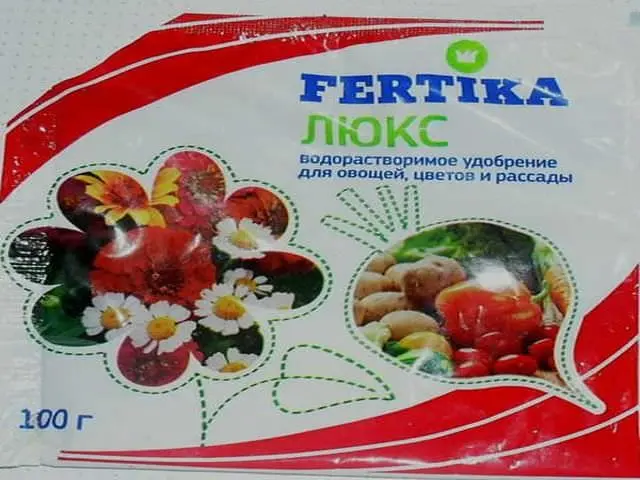
The release form involves liquid fertilizer and granular mixture
How to fertilize hydrangeas in spring
Hydrangea does not tolerate a high content of organic matter in the soil, so this type of fertilizer is necessarily alternated with mineral compounds. In addition, it is important to maintain the recommended acidity level for this crop, which should be at 4-5 pH. If you grow hydrangea in an alkaline environment, the plant will often get sick, and the flowers will become faded and inexpressive.
Young seedlings are fertilized even during planting, filling the bottom of the planting pit with nutrient mixtures. This is especially important if the soil on the site is poor. You can feed the bushes with potassium sulphide or humus, superphosphate is also suitable.
Tips from seasoned gardeners
Despite the fact that the hydrangea is among the undemanding plants, it is recommended to fertilize plantings from time to time. Small tricks associated with this process will help you to fully unlock the potential of the shrub:
- If you feed the seedling during planting with a nutrient mixture, pouring it into the bottom of the planting hole, then you can no longer fertilize it until winter. Moreover, this composition of the plant may be enough for the next year.
- If the acidity of the soil in the area is too low, the earth can be artificially acidified. To do this, the trunk circle is fertilized with rotted coniferous sawdust, high-moor peat, as well as pine or spruce litter.
- The color of large-leaved panicled hydrangea with pink flowers can be corrected if the plant is properly fed. To do this, it is necessary to fertilize plantings with aluminum alum, a solution of citric acid or high-moor peat, after which the flowers will turn blue. If these substances are introduced into the soil on only one side of the bush, you can get a two-tone color of the buds – pink and blue. An exception to this rule is the white hydrangea, which does not change the color of the petals.
Conclusion
If you fertilize the hydrangea in a timely manner in the spring, this will not only ensure the lush flowering of the shrub, but also significantly strengthen its immunity against a variety of fungal diseases. At the same time, it is important not to skew towards organic or, conversely, mineral fertilizers. These two types of dressings must be alternated.









